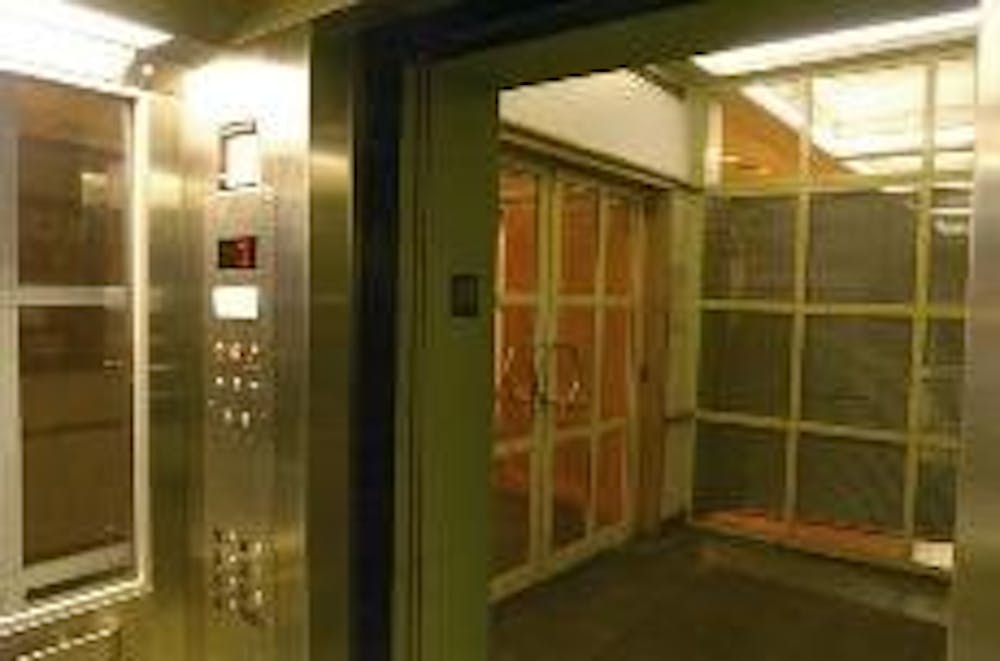
Neal Goss is a quadriplegic and uses a wheelchair to get around. But the 2006 Wharton graduate says Penn made a conscious effort to accommodate his disability and make him feel the same as every other student.
Since the Americans with Disabilities Act was passed in 1990, the University and other educational, business and cultural institutions say they have worked to become more accessible to those with disabilities.
Each year, Penn commits about $500,000 toward improving campus accessibility, according to Matt Tominey, director of Students with Disabilities Services. The changes necessary to reach that goal are determined by the Architecture Barrier Removal Program, which is under the control of the Committee for an Accessible University.
The committee "monitors campus accessibility, meaning we look into major renovations [and] new construction as well as make individual requests for project improvements," said Alice Nagle, associate director of SDS.
Nagle cited Perelman Quadrangle as one of the most-improved areas.
"All through the '80s and '90s, at one point, someone who used a wheelchair really could not get into Houston Hall," Nagle said.
Later, a slight improvement was made to allow them access, but that was only through a locked side door, she said. Those in wheelchairs had to ring a doorbell and wait to have their disabled status verified by a security guard looking at a surveillance camera monitor.
The guard would then push a button to open the door, allowing the person access to the building, Nagle said.
But having to use a side entrance and wait for the door to be unlocked meant that people in wheelchairs were made to feel different from their peers.
Perelman Quad eliminated that opportunity for discrimination by raising some of the earth to make the main entrance of the student union accessible, Nagle said.
Still, Nagle and Tominey say that Penn has an historic campus and that not every building can be made accessible.
"A good deal of [the campus] is now accessible as far as getting from one place to another, but there still are those great changes that have not been modified," Tominey said.
"Older buildings have been renovated to the extent achievable," Nagle said.
But it is not because of a lack of effort that the entire campus is not accessible, they say. Sometimes, older buildings simply cannot be changed.
"If you walk through the Quad, you'll come up to two or three stairs every couple hundred feet, and those types of modifications can't really be made without tearing the buildings down," Tominey said.
Ninety-two percent of campus buildings' first floors are now accessible, Tominey said.
Disabled students looking for housing can find it in the Quadrangle, high-rise dormitories, and other college houses, Nagle said.
Living off campus might not be as easy for them.
Goss said he lived in Pine Arms as an upperclassman and did not receive the same kind of accommodations that he had had as a freshman living in the Quad.
"I was pleasantly surprised with the willingness of the school to make it work," Goss said.
Although there are no current undergraduates in wheelchairs, there are three graduate students who use them, Tominey said, although he added that there could be more who have not "self-identified" with his office to request accommodations.
Every year, about three or four students who use wheelchairs contact the office to find out whether Penn will be accessible for them.
Now, there are not many wheelchair-users on campus, but the "population ebbs and flows," Tominey said.
Although disabled students can use Penn Accessible Transportation, Goss said he got himself around campus. If he was late to a class or had to leave early, professors were understanding.
If any of his classes were scheduled in inaccessible classrooms, Goss worked with Nagle to get them moved, a practice she said is increasingly rare because of the campus' improving accessibility.
"The advantage that we have here for physical access is that it's a very flat campus . and the buildings are fairly close together," Tominey said. "We're more accessible than Harvard or Princeton or Cornell."
"I have no problem recommending [Penn] to someone else" who uses a wheelchair, Goss said.
The Daily Pennsylvanian is an independent, student-run newspaper. Please consider making a donation to support the coverage that shapes the University. Your generosity ensures a future of strong journalism at Penn.
DonatePlease note All comments are eligible for publication in The Daily Pennsylvanian.




